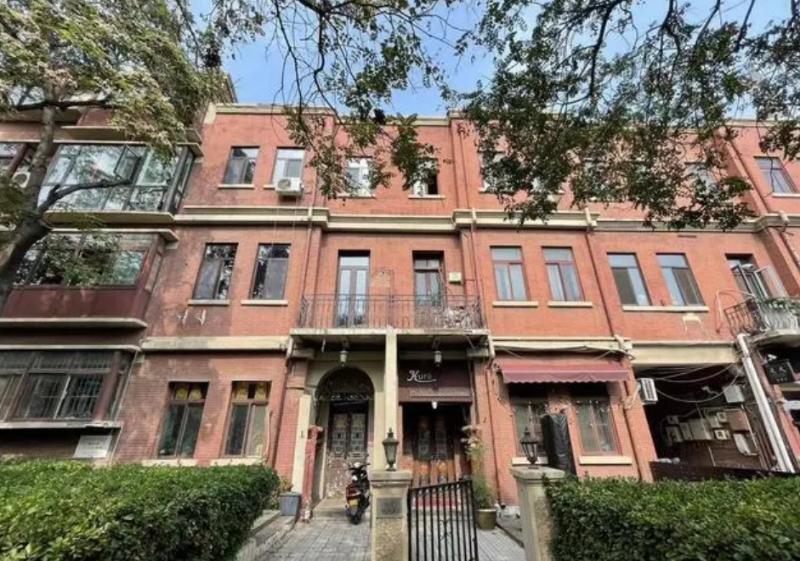The Cambridge Building in Tianjin's Wudadao Area
The Cambridge Building is a grand structure located in the heart of Tianjin, standing opposite the historic Qing Wang Fu. Designed by the renowned Austrian architect, Gailing, it was built in 1936. This four-story mixed-structure building is famous for its unique historical background and exquisite architectural style.

Reference: Tianjin Wudadao: A Cultural and Historical Tourism Area
The Architect: Gailing
Background and Contribution
Gailing, an exceptional architect, was unable to return to his homeland due to the turmoil of the early 20th century. As a result, many of his works remain in China. The Cambridge Building is one of his masterpieces. After its completion, Gailing established his architectural design office in this building. His influence is evident throughout the Wudadao area, where numerous small Western-style buildings designed by him can be found. These buildings, with their distinctive shapes and intricate designs, contribute to Tianjin’s unique urban landscape. Both the historic Qing Wang Fu and Gailing’s Cambridge Building showcase the architect's talent and artistic achievements.
Naming and Historical Significance
Origin of the Name
The name "Cambridge Building" originates from Chongqing Road, which was once named Cambridge Road. This name carries historical significance, evoking images of the elegance and prosperity of that era. Today, the Cambridge Building is part of history, telling the stories of the past and witnessing the changes of the present.
Architectural Features
Structure and Design
The Cambridge Building is a four-story mixed-structure edifice that combines the robustness of Western architectural techniques with the elegance of Eastern aesthetics. The use of reinforced concrete and brickwork not only provides structural integrity but also allows for artistic freedom in design. Gailing’s architectural prowess is evident in the building's balanced proportions, meticulous details, and the harmonious blend of different styles.
Exterior Design
The exterior of the Cambridge Building features large, symmetrically placed windows that allow natural light to flood the interior spaces. The facade is adorned with decorative elements that reflect both classical and modern influences. The building’s entrance is grand and inviting, framed by ornate columns and intricate carvings. The use of contrasting materials, such as brick and stucco, adds depth and texture to the building’s appearance.
Interior Layout
Inside, the Cambridge Building was designed to cater to both residential and commercial needs. The layout is practical yet elegant, with spacious rooms that boast high ceilings and large windows. The interior spaces are connected by wide corridors and grand staircases, emphasizing the building’s grandeur. Original features such as wooden floors, fireplaces, and terrazzo flooring have been well-preserved, adding to the building's historical charm.
Historical and Cultural Impact
Past and Present
Before the founding of the People’s Republic of China, the Cambridge Building housed prominent foreign residents and influential Chinese figures in commerce and academia. Over the years, it has served various functions, reflecting the city’s evolving needs. Today, it stands as a testament to Tianjin’s rich cultural heritage and architectural history.
Preservation and Modern Use
Now a protected historical site, the Cambridge Building is recognized for its architectural and historical significance. Efforts have been made to preserve its original features while adapting it for modern use. It continues to serve as a reminder of Tianjin’s vibrant past and its dynamic present.
Conclusion
The Cambridge Building, with its rich history and stunning architectural design, is more than just a structure. It is a symbol of Tianjin’s cultural heritage and a testament to the city’s architectural evolution. Standing proudly in the Wudadao area, opposite Qing Wang Fu, it remains a significant landmark, telling the stories of the past while witnessing the unfolding narratives of the present.
What is the historical significance of the Cambridge Building in Tianjin?
Answer: The Cambridge Building holds significant historical value as it was designed by the renowned Austrian architect Gailing and built in 1936. Its name originates from Chongqing Road, formerly known as Cambridge Road, reflecting the era's elegance and prosperity. Over the years, it has housed prominent foreign residents and influential Chinese figures in commerce and academia. Today, it stands as a protected historical site, preserving its original features while adapting to modern use, thereby symbolizing Tianjin’s rich cultural heritage and architectural history.
What are the key architectural features of the Cambridge Building?
Answer: The Cambridge Building is a four-story mixed-structure edifice that combines reinforced concrete and brickwork, offering both structural integrity and artistic design freedom. Key architectural features include large, symmetrically placed windows that allow natural light to flood the interior, a grand and inviting entrance framed by ornate columns and intricate carvings, and a harmonious blend of classical and modern influences in its decorative elements. Inside, the building features spacious rooms with high ceilings, wide corridors, grand staircases, and preserved original features such as wooden floors, fireplaces, and terrazzo flooring, all contributing to its historical charm and elegance.
note: This return of all, without the author's permission, may not be reproduced